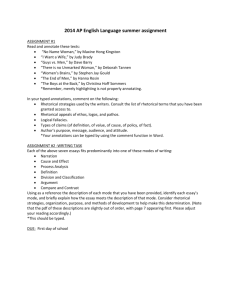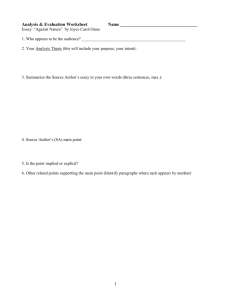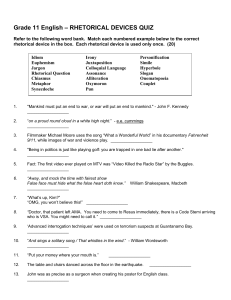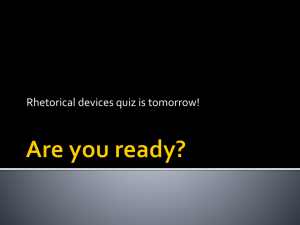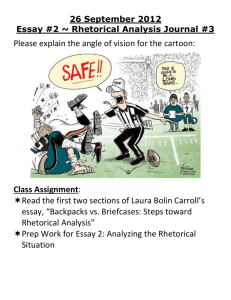*Throws Like the Girl She Is* p. 264
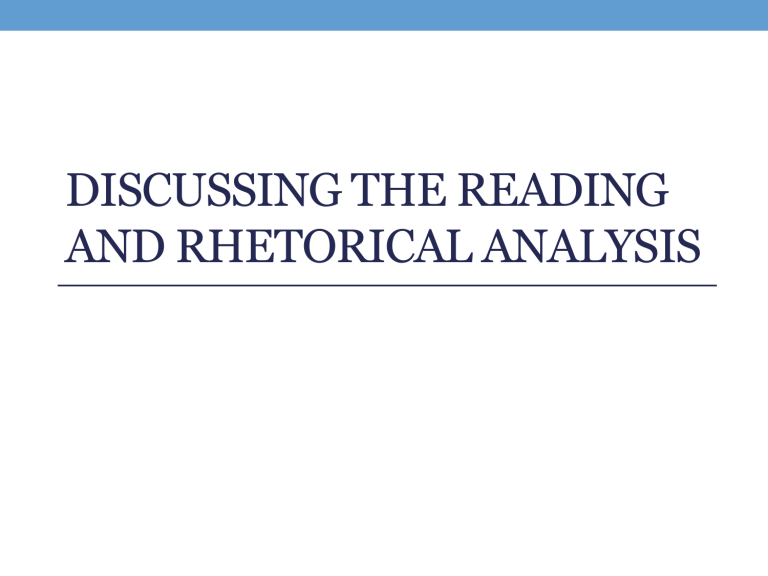
DISCUSSING THE READING
AND RHETORICAL ANALYSIS
“Throws Like the Girl She Is” p. 264
• “Like a Girl” Ad
• http://www.youtube.com/watch?v=XjJQBjWYDTs
• Mythbusters:
• http://www.youtube.com/watch?v=LD5Xm5u7UDM
• In addition to the idea of “throws like a girl” being an insult or not, what other important ideas does this essay discuss?
• Do you think that sports can represent more than just an activity for some people, but can also represent a culture, a family, a place to belong? Examples?
Discuss Reading: “Goin’ Gangsta Choosin’ Cholita”
•
•
•
This essay raises questions about whether or not people have the right to “claim” a ethnic or racial identity that is not part of their own ethnic/family heritage.
• What are some of the problems associated with appropriation of racial and ethnic identities that may connect to this practice?
The essay also raises the question whether multi-ethnic people can claim one of their racial or ethnic over the other(s).
• Is this idea less problematic than the first idea? Why or why not?
• What potential societal benefits might there be if people “embraced the new racial hybridism”? What potential negative repercussions might come from this as well?
This essay uses examples from real people’s lives to make its points. Is this an effective rhetorical strategy?
• What are its strengths? Weaknesses?
Self-Made Labels
• Sometimes claiming an identity or label can be problematic, especially if they involve people from a group with more social power deciding to “claim” identities from a group with less social power, while still retaining the ability to ‘claim’ their original label when its convenient.
• So should we just get rid of labels altogether?
•
•
•
Well, not necessarily. Labels can be helpful .
Some labels can be empowering, IF they are labels we choose for ourselves and they are not forced on us.
As one tumblr user put it:
• Re: LABELS. As I am sure any cat owner can tell you, someone else putting you in a box is entirely different from putting yourself in a box.
The Rhetorical Triangle:
Ethos, Pathos, and Logos
Introducing Rhetoric and the Rhetorical Triangle
• More information on pages 24-29 in Pop Perspectives
• (Draw and discuss Rhetorical Triangle on the board)
Key Elements of a Rhetorical Analysis
(from The Little Seagull Handbook)
1. A summary of the text you are working with:
•
•
• You need to tell your reader about the text you will be analyzing before they can understand your analysis!
Be sure to mention the NAME OF THE TEXT and the AUTHOR’S
FULL NAME right away!
• Be sure to refer to the author by first and last name at first, and by last name only after that. Do not refer to the author by their FIRST name only because it is considered too familiar and sometimes disrespectful.
Summarize the main point and key supporting points, especially if you are going to be focusing on them in your analysis.
2. Pay attention to CONTEXT:
• All texts are part of ongoing conversations, debates, or controversies about certain subjects. So you should think about how your chosen text relates to other topics you have heard or know about.
Key Elements of a Rhetorical Analysis
(from The Little Seagull Handbook)
3. A Clear Interpretation or Judgment:
• For the second part of your Rhetorical Analysis, you need to have a clear interpretation of what the author is saying, the effectiveness of HOW they are saying it, and your own evaluation of the topic.
4. Reasonable Support for Your Conclusions
• You need to support your analysis of the text with EVIDENCE— specific references to the text, including quotes.
• NOTE: the support you offer only has to be reasonable, not
unarguable—there is never only one way to interpret something.
Someone might disagree with you—and that’s ok!


